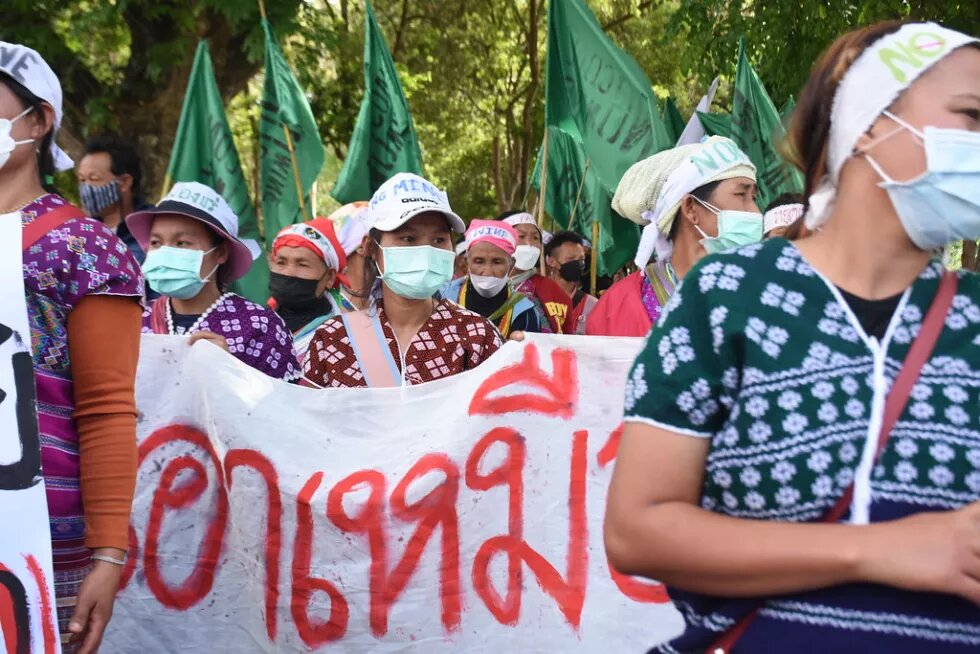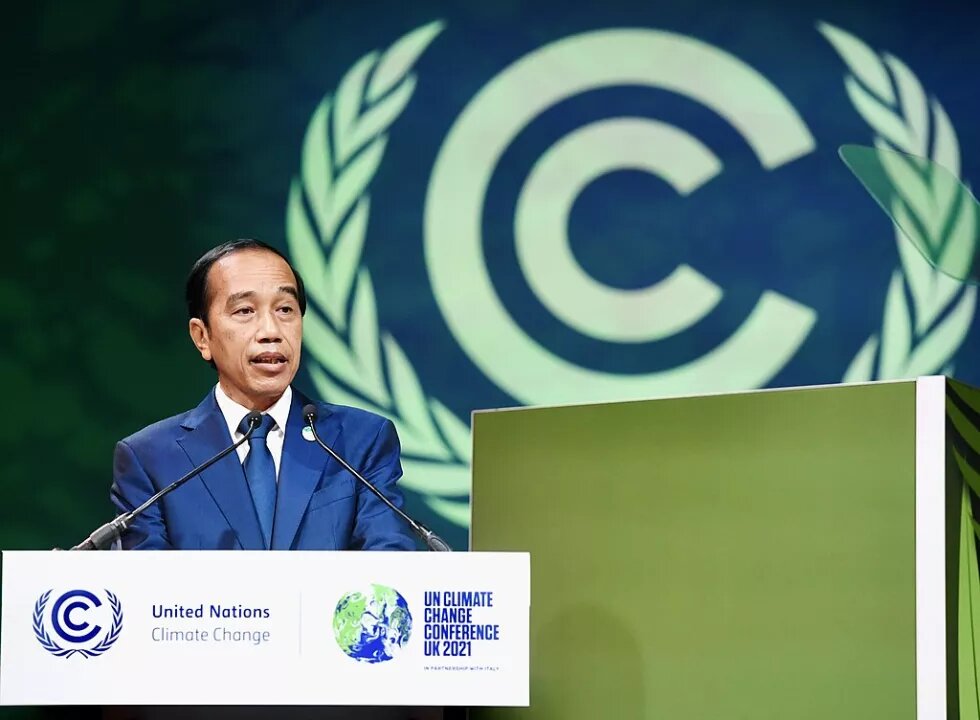
The recent decision by the human rights commission in the Philippines that 47 “Carbon Majors” could be brought to court and a lawsuit about a coalmine in Thailand represents a growing trend of environmental public interest litigation in the Southeast Asia region. Communities across the region are becoming more aware of their rights and they are increasingly using the power of the law to hold governments and corporations accountable to uphold and respect those rights, protecting the environment for present and future generations. If the governments of the region are serious about pursuing healthy and sustainable development, they should encourage environmental public interest litigation as a means to get them there.

On April 4, 2022, 50 plaintiffs representing over 600 people from the Omkoi District of Chiang Mai Province, Thailand filed a lawsuit that represents a growing trend of environmental public interest litigation in the Southeast Asia region. Communities like Omkoi are becoming more aware of their rights and they are increasingly using the power of the law to hold governments and corporations accountable to uphold and respect those rights. They are emerging as a powerful force for protecting the environment for present and future generations. If the governments of the region are serious about pursuing healthy and sustainable development, they should encourage environmental public interest litigation as a means to get them there.
The Omkoi lawsuit requests that the Chiang Mai Administrative Court revoke the Environmental Impact Assessment for a proposed coal mine that will destroy 284.3 rai (approx. 45.5 hectares) of land, including over 40 farm plots and local waterways on which the community depends for their livelihoods. The mine, if implemented, will only operate for approximately six years, and will, according to the EIA, only provide coal for a cement manufacturing facility located in Lampang Province. The plaintiffs allege that the Office of Natural Resources and Environmental Policy and Planning (ONEP) and the EIA Expert Review Committee did not follow the law when it approved the EIA over ten years ago.[1]
The plaintiffs have alleged that the EIA contains forged signatures of local villagers to give the appearance that they approved of the project.
On top of being outdated, the EIA report itself follows a pattern that has become all too common in the region – it is riddled with errors and significant omissions about the local community and natural resources, and it was produced with no meaningful public consultation or information sharing, as required by the law. The plaintiffs have alleged that the EIA contains forged signatures of local villagers to give the appearance that they approved of the project. This allegation was corroborated by the National Human Rights Commission of Thailand, which concluded in July 2020 that the EIA process for the project violated the villagers’ human rights and urged ONEP to make the company revise the report.
The case is representative of the well-known “implementation gap” regarding environmental protection laws in the Southeast Asia region – strong environmental laws in principle that are often not adequately implemented and enforced by the responsible government agencies or judiciary. This can be for a variety of reasons, including a lack of adequate human and financial resources, gaps and/or overlaps in institutional authority, lack of awareness and familiarity with environmental laws and policies, a lack of political will, or in the worst cases, corruption. Environmental public interest litigation is a mechanism that can help fill this gap and support government efforts to protect the environment and develop in a sustainable manner. There are two forms of environmental public interest litigation that will be discussed in this article: judicial review of government actions impacting the environment (sometimes referred to as administrative litigation), and citizen enforcement litigation.
The Power of the Law
Several recent cases in the region demonstrate how citizens, local communities and civil society organizations are increasingly using the power of the law to hold government agencies responsible for fulfilling their duties to protect the environment. For example, in July 2019 32 local citizens filed a “citizen lawsuit” in the Central Jakarta District Court alleging that a number of named officials, including President Joko Widodo and several Ministers, were negligent in failing to fulfill their duty to limit air pollution in Jakarta and surrounding areas – and the citizens won. In September 2021 the court issued a landmark decision that the defendants had in fact violated their duties under the law, and ordered the defendants to update national air quality standards, develop plans to address the air quality in Jakarta specifically, and enhance air quality monitoring in the transboundary context, among other things.
Two recent cases out of Thailand are attempting to use similar litigation to push for more aggressive action on the part of the government to curb the harmful air pollution. In March 2021, a resident of Chiang Mai filed a complaint in the Chiang Mai Administrative Court alleging that Thailand’s National Environment Board (NEB) had violated its duties under Article 59 of the Enhancement and Conservation of National Environmental Quality Act by failing to declare several provinces in the north of Thailand as “pollution control areas” and make plans to reduce air pollution. After reviewing evidence and hearing testimony, the court rejected the defendants’ arguments that its authority under Article 59 was discretionary and order the NEB to take action to control and reduce air pollution in four northern provinces. More recently, in March 2022 seven environmental organizations filed a lawsuit in Thailand’s Central Administrative Court alleging that the NEB, the Ministry of Natural Resources and Environment, and the Ministry of Industry were violating their duties by failing to take stronger actions to address the country’s air pollution crisis. Among other things, the plaintiffs requested that the court order the defendants to revise the country’s ambient air quality standards and to require industrial facility to continuously monitor and report their PM2.5 emissions. Although the court has not yet rendered a judgement in the case, it does appear to have had some influence on the government – on April 4th the Air Quality Standards Subcommittee proposed revised ambient air quality standards for PM2.5 in line with the plaintiffs’ requests. Although these must still be approved by the NEB, it is an encouraging sign – and a demonstration of the power of the law.
Another notable case in Thailand that will be interesting to watch in the coming months concerns the construction of the Xayaburi hydropower dam on the mainstream Mekong River in Laos. Back in August 2012, a group of 37 villagers from a network representing eight provinces in Thailand filed a lawsuit in Thailand’s Administrative Court alleging that several government entities failed to follow required processes to disclose information, hold public hearings, and conduct an assessment of the environmental and social impacts of the construction of the dam before executing a Power Purchase Agreement (PPA) to purchase 95% of the power produced. In December 2015 the Central Administrative Court dismissed the case on the grounds that the defendant agencies did not neglect their duties and that the PPA did not trigger the EIA requirements. However, the plaintiffs appealed that decision, and after some delays due to the pandemic, the Supreme Administrative Court heard oral arguments on May 3, 2022. The parties are now awaiting the Court’s official decision on the case.
Challenges remain
However, citizen enforcement cases remain elusive in the region for a variety of reasons, including most importantly the lack of procedural mechanisms for such cases in most countries in the region. Citizen enforcement litigation could potentially be a transformative mechanism that could support the enforcement of environmental protection laws and bring polluters into compliance. Both the Philippines and Indonesia have recognized citizen enforcement cases for a number of years now through their environmental protection laws and court procedures, although lawyers and NGOs still report ongoing challenges with regard to litigating these cases.
Citizen enforcement litigation could potentially be a transformative mechanism that could support the enforcement of environmental protection laws and bring polluters into compliance.
China amended its Environmental Protection Law on 2014 to authorize a form of citizen enforcement cases, which could potentially serve as a model for other countries in the region. Indeed, the Chief Justice of China’s Supreme People’s Court stated that the government made this amendment specifically to “encourage the public to participate in environmental protection.” Environmental organizations have since been able to achieve some significant success with these cases. In China’s first environmental public interest litigation case, filed on the day the new law came into effect in 2015, the plaintiff NGOs were able to secure a victory against a quarry causing pollution in Fujian province that included hefty fines and an order to restore the damaged environment. Environmental NGOs in China have also found creative ways to use the new law to address the climate crisis. In August 2016, the NGO Friends of Nature filed a lawsuit against a state electric grid operator in Gansu province for causing damage to the environment by failing to follow requirements set in the law to maximize their purchase of renewable energy. As of this writing the case has not yet been resolved – so it will be an interesting space to watch. Despite these encouraging developments, many challenges remain. For example, because China’s law allows NGOs to bring cases based on “environmental damages” rather than simply violations of the law, disputes have arisen in cases over how to go about calculating those damages.
Beginning around 2015, Cambodia’s Ministry of the Environment led a process to develop a comprehensive new Environment and Natural Resources Code. The 11th draft of the Code included provisions on “public interest complaints” that would allow individuals or legal entities to file cases against “environment and natural resource offenses or non-compliance with provisions stipulated in [the Code].” Although the Code has been under review since 2018 and it has not yet been adopted, the fact that these provisions on public interest complaints were included in the draft demonstrate at least that awareness of this powerful tool is growing in the region.
If the governments of the region are serious about environmental protection and sustainable development, they would do well to build on this trend and adopt measures to enlist citizens and NGOs to help fill the environmental law implementation gap.
As the countries of the region continue their business-as-usual rapid development in the wake of the global pandemic, environmental pollution and damage will also continue to rise and will exact enormous economic and public health related costs on society at large. Countries like the United States and China adopted laws to encourage and promote environmental public interest litigation precisely because they recognized that their governmental agencies could not possibly adequately enforce their environmental laws on their own. The cases mentioned in this article provide a few encouraging examples of the growth and prospects for environmental public interest litigation in the Southeast Asia region. If the governments of the region are serious about environmental protection and sustainable development, they would do well to build on this trend and adopt measures to enlist citizens and NGOs to help fill the environmental law implementation gap.
__
William (BJ) Schulte is the Mekong Region Policy and Campaigns Advisor at EarthRights International. He worked with a variety of local partners including government departments, lawyers, and civil society organizations on initiatives ranging from training for capacity building to supporting the development of environmental laws, regulations and guidelines.
The views expressed in this article are not necessarily those of Heinrich Böll Stiftung.
[1] 2018 amendment to EIA law, which stated that no project approvals can be issued based on EIAs that are over five years old, would have prevented the company from using this EIA for its mining license. But, since the EIA was approved prior to the amendments, the amendments are not applicable.





